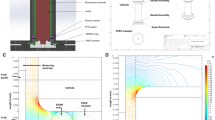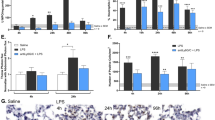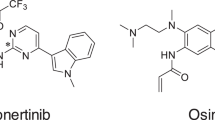Abstract
Repeated oral administration of chemopreventive retinoids such as isotretinoin over extended periods of time is associated with intolerable systemic toxicity. Here isotretinoin was formulated as a powder aerosol, and its delivery to the lungs of rats was studied with the aim to explore the possibility of minimizing adverse effects associated with its oral administration. Rats received isotretinoin orally (0.5, 1 or 10 mg kg–1) or by inhalation (theoretical dose ~1 or ~10 mg kg–1) in a nose-only inhalation chamber. Isotretinoin was quantitated by high-pressure liquid chromatography in plasma and lung tissue. The ratios of mean area of concentration-vs-time curve (AUC) values in the lungs over mean AUCs in the plasma for isotretinoin following single or repeated aerosol exposure surpassed those determined for the oral route by factors of between two (single low-dose) and five (single high-dose). Similarly, the equivalent ratios for the maximal peak concentrations in lungs and plasma obtained after aerosol exposure consistently exceeded those seen after oral administration, suggesting that lungs were exposed to higher isotretinoin concentrations after aerosol inhalation than after oral administration of similar doses. Repeated high doses of isotretinoin by inhalation resulted in moderate loss of body weight, but microscopic investigation of ten tissues including lung and oesophagus did not detect any significant aerosol-induced damage. The results suggest that administration of isotretinoin via powder aerosol inhalation is probably superior to its application via the oral route in terms of achieving efficacious drug concentrations in the lungs. © 2000 Cancer Research Campaign
Similar content being viewed by others
Article PDF
Change history
16 November 2011
This paper was modified 12 months after initial publication to switch to Creative Commons licence terms, as noted at publication
References
Ahn MJ, Langenfeld J, Moasser MM, Rusch V and Dmitrovsky E (1995) Growth suppression of transformed human bronchial epithelial cells by all- trans -retinoic acid occurs through specific retinoid receptors. Oncogene 11: 2357–2364
Boyle JO, Langenfeld J, Lonardo F, Sekula D, Reczek P, Rusch V, Dawson MI and Dmitrovsky E (1999) Cyclin D1 proteolysis: a retinoid chemoprevention signal in normal, immortalized, and transformed human bronchial epithelial cells. J Natl Cancer Inst 91: 373–379
Clark AR (1995) Medical aerosol inhalers – past, present and future. Aerosol Sci Tech 22: 374–391
Gagnon RC and Peterson JJ (1998) Estimation of confidence intervals for area under the curve from destructively obtained pharmacokinetic data. J Pharmacokinet Biopharm 26: 87–102
Guyton AC (1947) Measurement of the respiratory volumes of laboratory animals. Am J Physiol 150: 70–77
Grunberg S and Itri L (1987) Phase II study of isotretinoin in the treatment of advanced non small cell lung cancer. Cancer Treat Rep 71: 1097–1098
Hixson EA, Burdeshaw JA, Denine EP and Harrison SD (1997) Comparative subchronic toxicity of all- trans - and 13- cis -retinoic acid in Sprague-Dawley rats. Toxicol Appl Pharmacol 47: 359–365
Hong WK, Endicott J, Itri LM, Doos W, Batsakis JG, Bell R, Fofonoff S, Byers RM, Atkinson EN, Vaughan C, Toth BB, Kramer A, Dimery IW, Skipper P and Strong S (1986) 13- Cis retinoic acid in the treatment of oral leukoplakia. N Engl J Med 315: 1501–1505
Hong WK, Lippman SM, Itri LM, Karp DD, Lee JS, Byers RM, Schantz SP, Kramer AM, Lotan R, Peters LJ, Dimery IW, Brown BW and Goepfert H (1990) Prevention of second primary tumors with isotretinoin in squamous-cell carcinoma of the head and neck. N Engl J Med 323: 795–801
Kalin JR, Wells MJ and Hill DL (1982) Disposition of 13-cis retinoic acid and N-(2-hydroxyethyl)retinamide in mice after oral dosing. Drug Metab Dispos 10: 391–398
Kerr IG, Lippman ME, Jenkins J and Myers CE (1982) Pharmacology of 13-cis-retinoic acid in humans. Cancer Res 42: 2069–2073
Lanvers C, Hempel G, Blaschke G and Boos J (1996) Simultaneous determination of all-trans-, 13-cis-, and 9-cis-retinoic acid, their 4-oxo metabolites and all-trans-retinol in human plasma by high-performance liquid chromatography. J Chromatogr 685: 233–240
Lee JS, Lippman SM, Benner SE, Lee JJ, Ro JY, Lukeman JM, Morice RC, Peters EJ, Pang AC, Fritsche HA and Hong WK (1994) Randomized placebo-controlled trial of isotretinoin in chemoprevention of bronchial squamous metaplasia. J Clin Oncol 12: 937–945
Lotan R (1996) Retinoids in cancer chemoprevention. FASEB J 10: 1031–1039
Lotan R, Xu XC, Lippman SM, Ro JY, Lee JS, Lee JJ and Hong WK (1995) Suppression of retinoic acid receptor-beta in premalignant oral lesions and its up-regulation by isotretinoin. N Engl J Med 332: 1405–1410
Parthasarathy R, Gilbert B and Mehta K (1999) Aerosol delivery of liposomal all-trans-retinoic acid to the lungs. Cancer Chemother Pharmacol 43: 277–283
Rowland M and Tozer TN (1995) Clinical Pharmacokinetics – Concepts and Applications, pp 465–472. Williams and Wilkins: Media, Pennysylvania
Vail DM, Hershey AE, Kurzmann I, Bohling C, Forrest LJ, Stonerook M, Placke ME and Imondi AR (1999) Inhalation chemotherapy for macroscopic primary or metastatic lung tumors: proof of principle. Proc Am Assoc Cancer Res 40: 416
Virchow JC, Kroegel C and Matthys H (1994) Antiasthma drug delivery – what is on the horizon?. Clin Pharmacokinet 27: 85–93
Warrell RP, Pastorino U and Decensi A (1995) Clinical toxicology of the retinoids. In: Retinoids in Oncology, ESO Monograph, Degos L, Parkinson DR (eds), pp 67–71. Springer Verlag: Berlin, Heidelberg, New York
Wattenberg LW, Wiedmann TS, Estensen RD, Zimmerman CL, Steele VE and Kelloff GJ (1997) Chemoprevention of pulmonary carcinogenesis by aerosolized budesonide in female A/J mice. Cancer Res 57: 5489–5492
Author information
Authors and Affiliations
Rights and permissions
From twelve months after its original publication, this work is licensed under the Creative Commons Attribution-NonCommercial-Share Alike 3.0 Unported License. To view a copy of this license, visit http://creativecommons.org/licenses/by-nc-sa/3.0/
About this article
Cite this article
Raleigh, S., Verschoyle, R., Bowskill, C. et al. Pulmonary availability of isotretinoin in rats after inhalation of a powder aerosol. Br J Cancer 83, 935–940 (2000). https://doi.org/10.1054/bjoc.2000.1421
Received:
Revised:
Accepted:
Published:
Issue date:
DOI: https://doi.org/10.1054/bjoc.2000.1421



